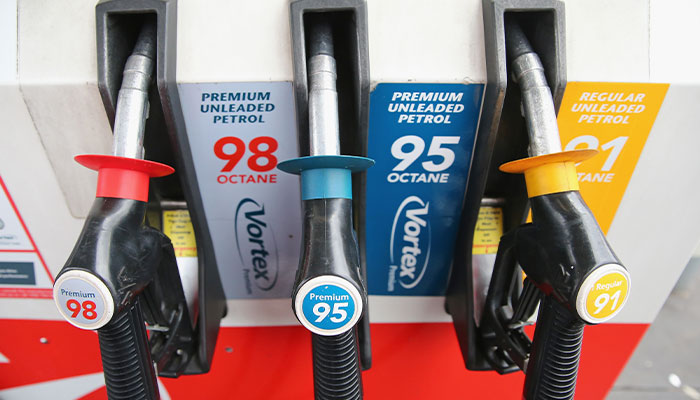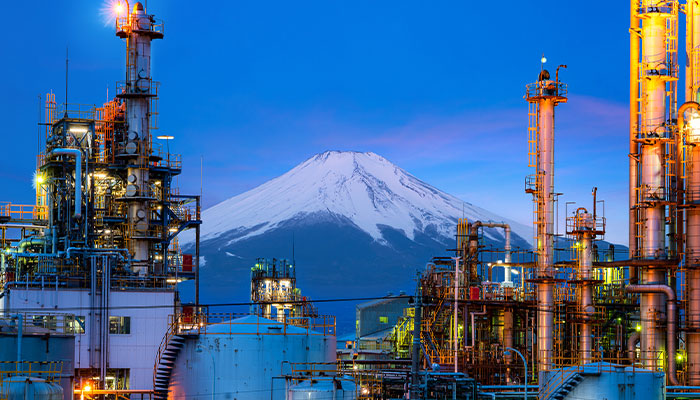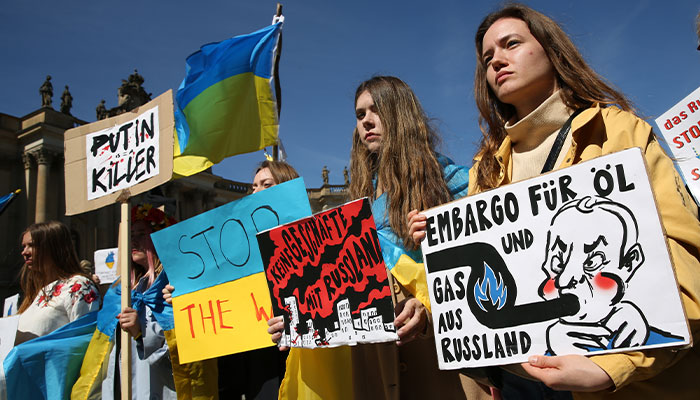Fuel prices can be broken down into three categories: 50 per cent is importation cost, 30-40 per cent is taxes – although much less for the next few months – and the remainder is generally what retailers have left to compete with.

Petrol v diesel
Most Australian motorists fill their cars up with petrol and some with diesel.
Petrol, or gasoline, is Australia’s most common fuel, used in 72 per cent of all road vehicles. Diesel is the second biggest seller, powering 26 per cent of road vehicles.
Most passenger vehicles – cars, motorbikes and utes – run on petrol, whereas most large vehicles such as buses, vans and big commercial trucks drink diesel; 85 per cent of farming equipment also uses diesel.
The cost of taxes
A portion of what motorists pay at the pump goes to the government in the form of two taxes: fuel excise, and goods and services tax (GST).
Fuel excise goes to the federal government and is paid at a flat rate. For petrol and diesel that rate is usually 44.2 cents per litre, but from 30 March – 28 September 2022 it will be down to 22.1, half the usual rate.
Treasurer Josh Frydenberg announced these tax cuts as part of the 2022-23 budget, to provide temporary relief for motorists.
Australia consumes about 1 million barrels of petrol and diesel a day – equivalent to about 160 million litres.
GST is an additional 10 per cent applied after everything else is added up.
Combined, these taxes make up a portion of overall fuel price. Generally, the higher the price of fuel, the lower percentage of that price is taxes. A petrol or diesel price of $1.40 per litre would be 24.9 per cent tax, whereas a price of $2.10 would be only 19.6 per cent tax.
Once the excise cuts lift in September these rates should return to about 30-40 per cent of total prices. These percentages will inevitably vary, though, as fuel prices fluctuate – particularly petrol.
The oil supply chain
Australia consumes about 1 million barrels of petrol and diesel a day – equivalent to about 160 million litres. This fuel reaches Australian petrol pumps by way of a complex international supply chain.

Overseas refining: Japan is one of Australia’s biggest providers of petrol.
Fifty per cent of what motorists pay at the pump is what’s known as the international price – that is, the price at which Australian wholesalers buy the fuel on the international market.
Singapore, South Korea, Japan and Malaysia are Australia’s biggest petrol providers. Most of our diesel comes from Singapore and South Korea. However, supply from Singapore has fallen significantly. Their diesel is heading to California in 2022.
These countries purchase crude oil – mostly from the Middle East and Gulf countries, but also from the US, Brazil and parts of Africa – and turn it into fuels through a process called refining.
Oil market analysts use certain fuel prices as benchmarks for the going rate of those fuels on the international market. Australia uses Singaporean benchmarks for petrol and diesel as indicators for the price at which our wholesalers are bulk buying these products. Since international prices make up 50 per cent of the retail cost of petrol and diesel, a jump in benchmark prices is usually felt at the service station.
Australian refineries
Australia sources more than 80 per cent of its petrol and diesel from overseas, with the rest refined locally. However, even Australian refining is highly connected to the global supply chain.
Over the past 20 years Australian refineries have struggled to compete with newer plants in the Asia-Pacific. These larger, more sophisticated refineries can produce fuel cheaper than their Australian counterparts, which have steadily declined in number.
This shift overseas has even affected Australian crude oil: of the 280,000 barrels we produce daily, more than 214,000 are exported to overseas refineries. We import around 360,000 a day.
Only two Australian refineries still operate: Viva Energy’s plant in Geelong, and Australian-owned Ampol’s plant in Brisbane. These plants are both over 50 years old and import most of their crude oil.
War! What is it good for? Oil prices
Australia’s enormous reliance on fuel imports leaves it highly vulnerable to volatile international fuel markets. The first four months of 2022 have demonstrated this, with Russia’s invasion of the Ukraine causing a surge in fuel prices.

Up in flames: Protesters in Germany demonstrate against Russian military aggression in Ukraine … sanctions against Russian oil have hiked up prices at the pump.
Russia produces 11 per cent of the world’s oil, making it the third biggest producer after the US and Saudi Arabia.
The US and Canada have sanctioned all oil, coal and gas from Russia. But some Russian diesel still flows through the US ports. Because the global oil market is so interconnected this strain on supply has hiked up the prices for crude oil everywhere, even in the Asia Pacific. This in turn has hiked up the costs of petrol and diesel.
This would significantly worsen if the European Union also sanctioned Russian oil, but don’t hold your breath. Europe imports more than half of Russia’s crude oil, but that co-dependency means dire consequences for the EU if they turn off the tap.
Building new Australian refineries is no longer viable, but there are other options.
Australian refineries have also promised to stop buying Russian crude oil. However, this will have minimal effect on domestic retail prices.
What has and will continue to have an effect is the behaviour of oil traders.
What traders will often do is buy speculatively – that is, taking a punt at what the oil prices are likely to be in a few months’ time.
They’ve been buying up crude oil and fuel at elevated prices in the hope that prolonged sanctions will allow them to sell at a profit in coming months. Meanwhile others are shorting the oil, or betting on the oil price going down.
This has elevated the international price of crude oil, petrol and diesel, which in turn has driven up retail prices.
Fuel wholesalers and retailers
After taxes and international prices, the remainder of fuel costs cover things like transport, storage, marketing and profit margins.

Fuel stop: Profit margins are relatively small for fuel retailers, who tend to make more profit selling food and drink.
The amount that petrol stations, or retailers, spend on each of these varies widely. Many retailers are owned by companies that buy fuel from the international market. Others are fully independent and purchase their own fuel from Australian wholesalers. Between these two categories are contractors or franchisees who operate under various degrees of independence while paying to use a big brand name.
Profit margins are relatively small for fuel retailers. They generally make more profit selling food and drinks than they do from selling fuel, which is why service stations often partner with convenience stores.
Profit margins are especially narrow in competitive, high-traffic areas. In major cities this causes a phenomenon known as petrol price cycles, where competing retailers gradually drive fuel prices down over a period of days to weeks until it snaps back up.
Looking to the future
If the war in Ukraine goes on, I believe we’re going to see oil prices staying very high, which will make it very unpleasant – from filling up your car to the price of groceries. And let’s not forget the creeping airline ticket prices.
The most effective way to keep these costs down in future is to improve our long-term energy security.
Building new Australian refineries is no longer viable, but there are other options.
The best thing we can do right now is increase our fuel storage and have it at strategic locations – enough for a couple of months at least. Unleaded petrol reserves would be of biggest benefit to consumers, while storing diesel and jet fuel would be useful for civil aviation and the military.
New trade agreements could also help ease the pain of future fuel squeezes.
The Indian company Reliance Industries, for example, has agreed to supply Australia with diesel. This could be temporary, though, as they are also sending plenty to Europe who is experiencing a diesel crisis – we need to keep looking for more concrete supply arrangements.

(pictured) is a Senior Lecturer in the Department of Applied Finance at Macquarie Business School.








